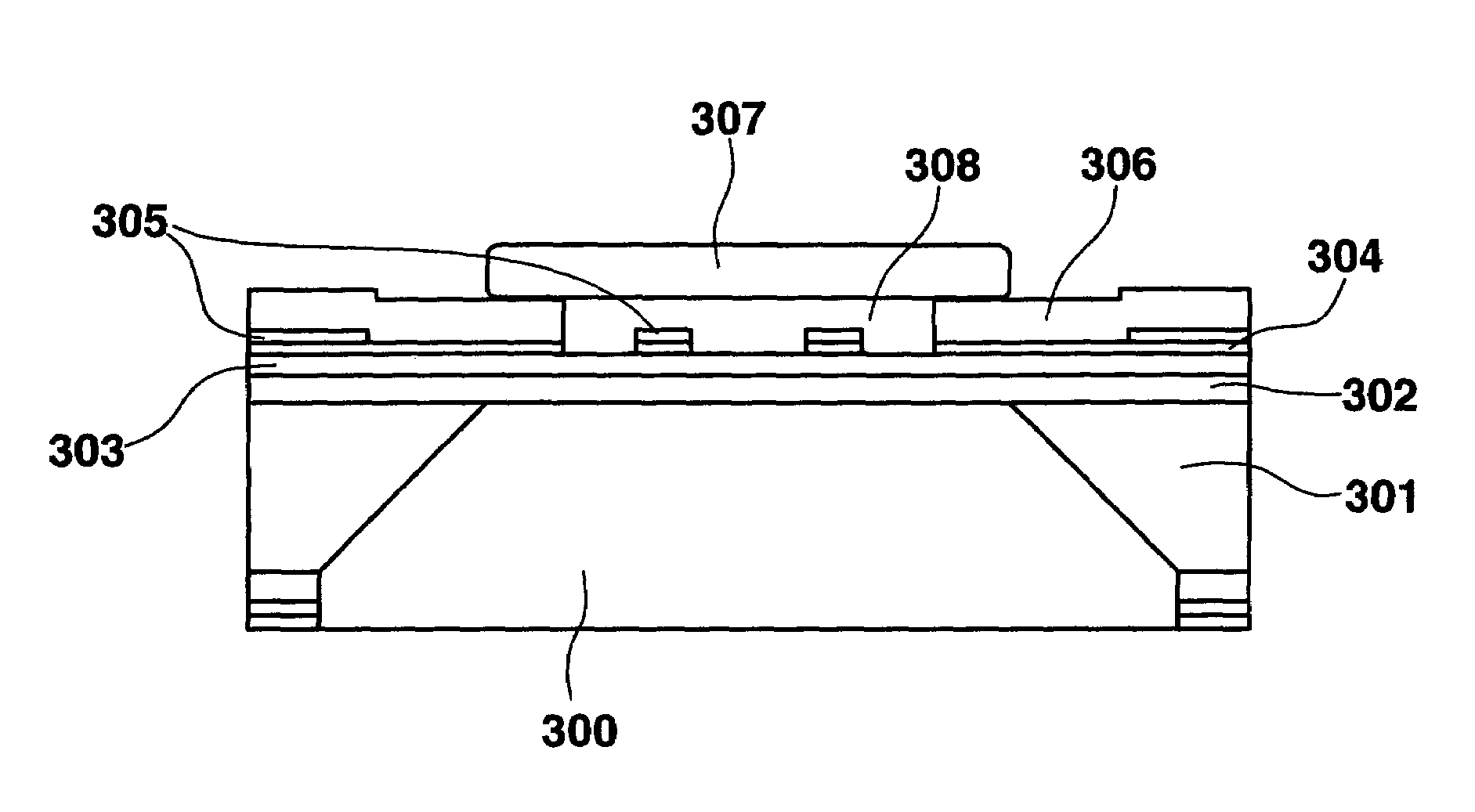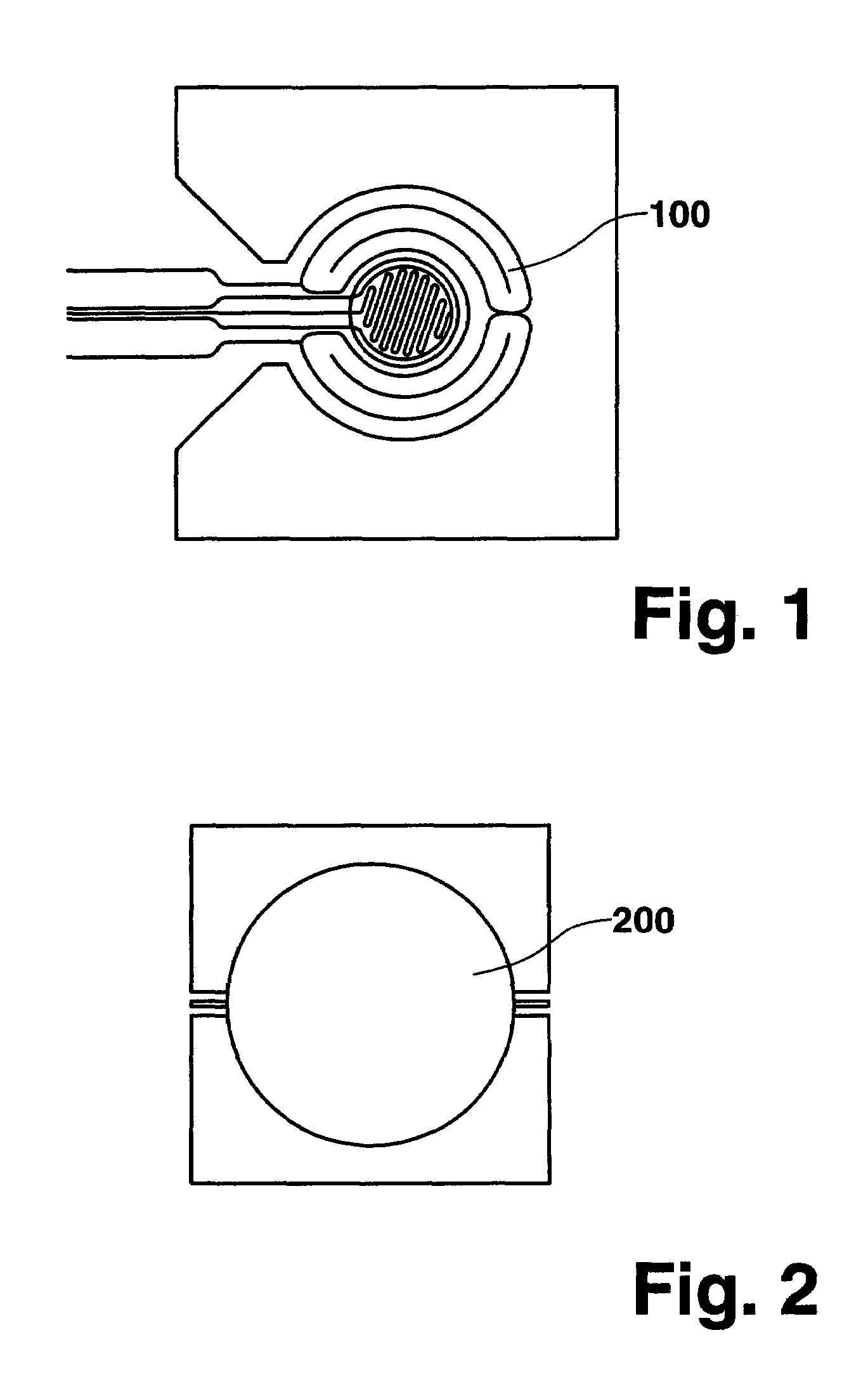Micromechanical infrared source
a micromechanical and infrared source technology, applied in the field of infrared detection devices, can solve the problems of limiting the utilization of incandescent lamps, affecting the accuracy of measurement, and reducing the use of lamps, so as to avoid or reduce the need for infrared radiation in other directions
- Summary
- Abstract
- Description
- Claims
- Application Information
AI Technical Summary
Benefits of technology
Problems solved by technology
Method used
Image
Examples
Embodiment Construction
[0026]The use of a micromechanical sensor element or a sensor element manufactured using hybrid technology represents a cost-effective radiation source for a spectroscopic gas sensor or fluid sensor having an irradiation maximum in the desired MIR range. This makes it possible to omit material that absorbs in this wavelength range, such as glass, for example, in the radiation path of the IR source configured in this way.
[0027]The power consumption and the overall size of the radiation source are reduced since the predominant portion of the radiation is generated in the required wavelength range. For spectroscopic sensors, the radiation proportion of IR sources (e.g., incandescent lamps) generated in the more short-waved range is dispensed with as undesirable power loss. The yield of the desired infrared radiation is increased by omitting a cover for the radiation source having a material that absorbs in the relevant wavelength range.
[0028]A radiation source manufactured using hybrid...
PUM
| Property | Measurement | Unit |
|---|---|---|
| wavelength range | aaaaa | aaaaa |
| temperatures | aaaaa | aaaaa |
| temperature | aaaaa | aaaaa |
Abstract
Description
Claims
Application Information
 Login to View More
Login to View More - R&D
- Intellectual Property
- Life Sciences
- Materials
- Tech Scout
- Unparalleled Data Quality
- Higher Quality Content
- 60% Fewer Hallucinations
Browse by: Latest US Patents, China's latest patents, Technical Efficacy Thesaurus, Application Domain, Technology Topic, Popular Technical Reports.
© 2025 PatSnap. All rights reserved.Legal|Privacy policy|Modern Slavery Act Transparency Statement|Sitemap|About US| Contact US: help@patsnap.com



